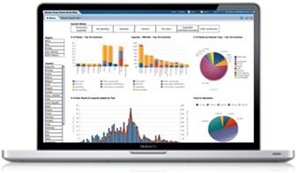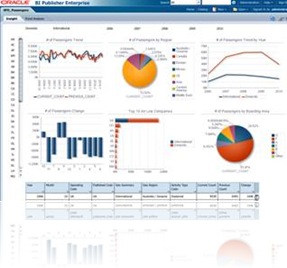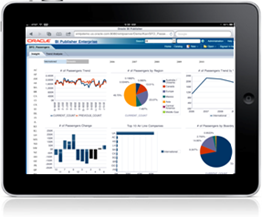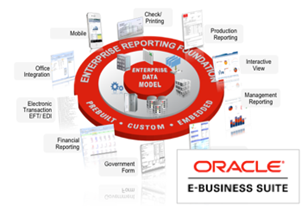Tour d’horizon du processeur SPARC M7
Oracle a récemment dévoilé à l'OpenWorld 2015 son nouveau processeur SPARC M7. Il s'agit du 6ème que l'entreprise a sorti depuis le rachat de Sun Microsystem en 2010. Avec le SPARC M7, Oracle a repoussé les limite des capacités des systèmes SPARC.
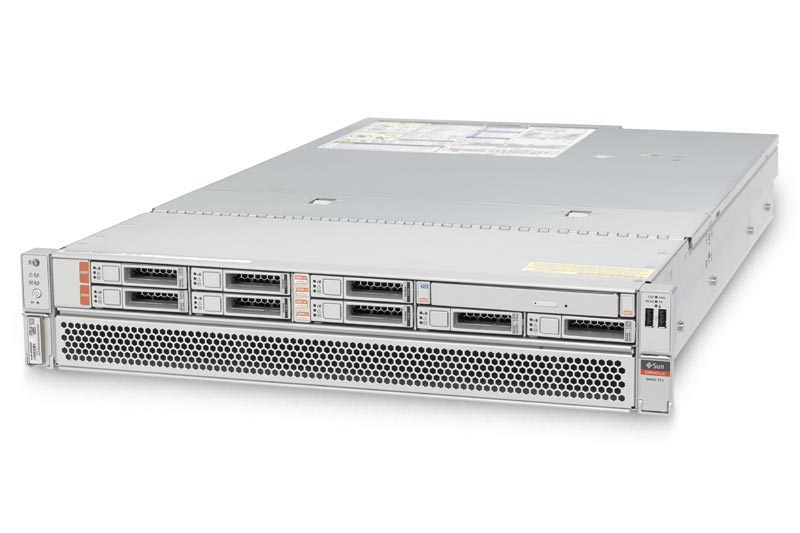

Mettre à jour des Ldoms sur Oracle Solaris 11.3 en 20 minutes !
Oracle Solaris 11 dispose d'un puissant système de mise à jour basé sur IPS et sur ZFS. Quand on met à jour le système d'exploitation un nouvel environnement est créé contenant le système mis à jour. Ce fonctionnement a pour avantage de ne pas avoir d'impact sur l'environnement actuellement actif puisqu'on ne le modifie pas directement.
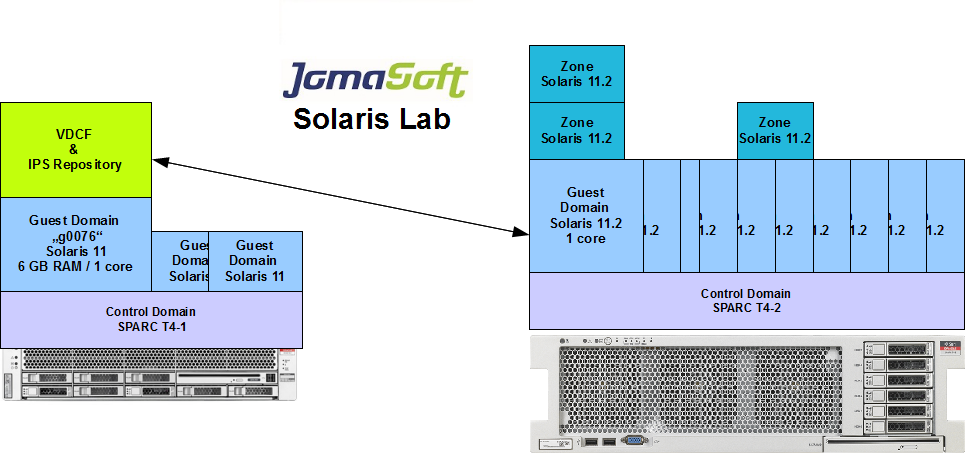

Livre Oracle Solaris 11.2 System Administration Handbook
Il y a peu de livres traitant de Solaris et aujourd'hui d'Oracle Solaris. De plus le système d'exploitation a énormément évolué depuis ces dernières années.
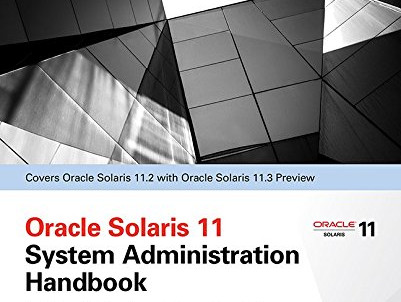

Déployer des agents Oracle Enterprise Manger 12c sur Solaris 11.x
Déployer des agents Enterprise Manger sur Solaris n'est pas une tache difficile, et est similaire au déploiement sur les environnements Linux avec juste quelques changements mineurs.
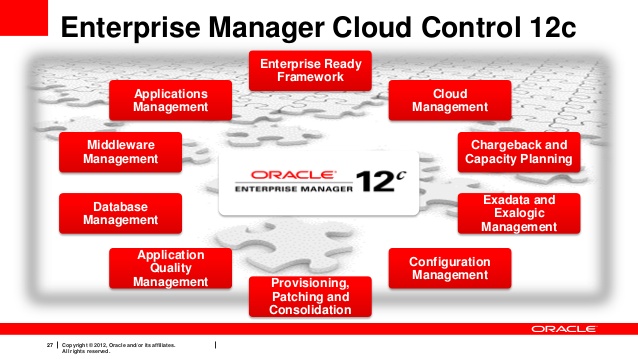

oracle Solaris 11.3 découvrez la vidéo de présentation
Avec l'arrivée de la nouvelle mouture d'Oracle Solaris, Oracle a décidé de vous présenter les nouveaux challenges auquel répond Oracle Solaris 11.3 orienté sur 3 valeurs : La sécurité, la vitesse et la simplicité.


Vue d’ensemble des différentes générations de Sparc
Savez-vous combien il y a de types de CPU SPARC actuellement sur le marché ? Pas un, pas deux, mais cinq. Le SPARC64-VII, le T3, le T4, T5, M5 et M10.


Benchmark entre Oracle et IBM en terme de coût global
Benchmark entre Oracle et IBM en terme de coût global
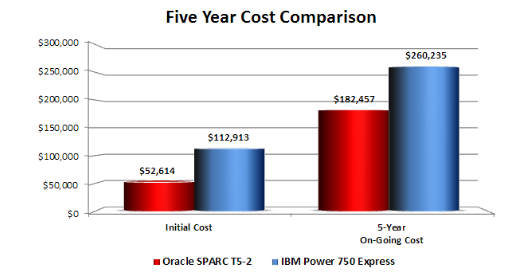

Vidéo de la TechDay 2013 sur Sparc et Solaris
Retrouver le compte rendu vidéo du TechDay Solaris/SPARC qui s'est déroulé le 15 mai à PARIS.
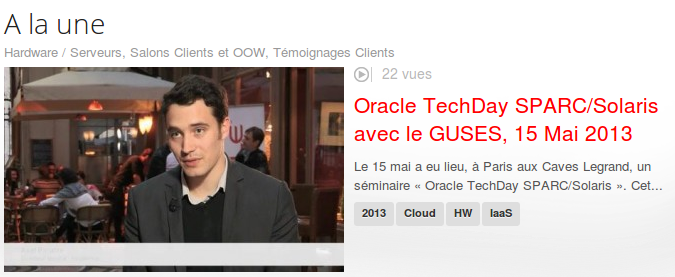

Oracle Solaris Sparc TechDay 2013 : Retour sur l’événement
Oracle-Solaris.fr était présent à cette événement d'envergure pour les technologies Oracle Solaris et Sparc. L'objectif premier était d'y faire des rencontres, entre administrateur et ingénieur système Solaris mais aussi d'y partager ces expériences.
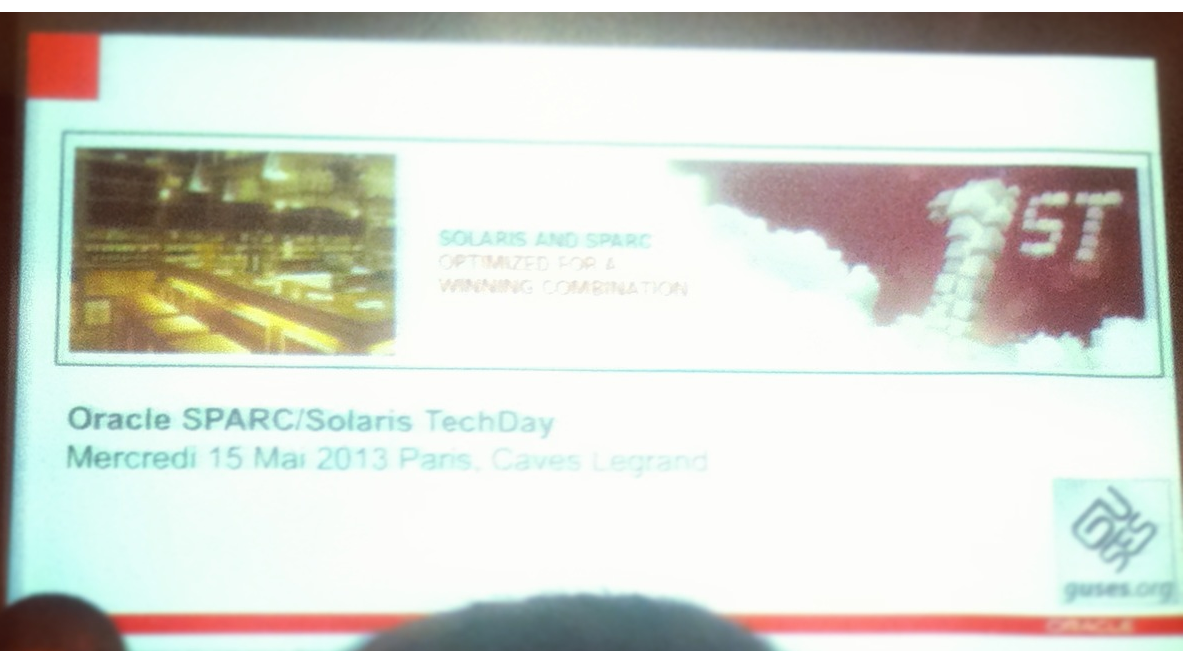

la nouvelle version d’Oracle BI Publisher 11g est sorti le 23 mai 2011 avec tout un tas de nouveautés !
Création de rapports beaucoup plus rapide
la génération des rapports avec la nouvelle version de BI Publisher consomme moins de mémoire et est plus rapide ! En effet, BI Publisher a été hautement optimisé grâce à nouveaux 3 mécanismes de cache pour fournir une meilleure réactivité du logiciel.
Un nouveau composant : les listes
le composant « List » est une moyen astucieux pour filtrer les données dans un rapport. Lorsque vous cliquez sur les valeurs dans la liste, BI Publisher filtre automatiquement les données dans le rapport. Dans l’éditeur, vous pouvez régler l’orientation de la liste pour quelle soit verticale ou horizontale. Les listes sont une excellente façon d’intéragir dans vos rapport et permet de gagner en perspicacité.
Applications pour Iphone et Ipad
les mobiles étant de plus en plus ancrés dans les entreprises BI Publisher est donc naturellement devenu compatible avec l’Ipad et l’Iphone pour pouvoir intéragir directement sur les rapports et les données. Il suffit donc d’accéder à partir de Safari à l’interface web de BI Publisher ou tout simplement d’installer l’application Oracle BI Mobile App. Le point fort est que la richesse des fonctionnalités depuis votre mobile est aussi bonne que sur votre ordinateur.
plateforme de reporting – E-Business Suite
BI Publisher prend désormais en charge E-Business Suite. Ainsi le niveau de sécurité est basé sur les responsabilités de l’utilisateur mis en place dans E-Business Suite. Cela vous permet aussi de passer les responsabilités à la volée d’un utilisateur à un autre. Vous pourrez également utiliser BI Publisher pour afficher, gérer et diffuser les rapport venant de E-Business Suite.
Nouvelle source de données – Fichier excel local
Souvent vous avez besoin de données dans Excel pour compléter d’autres données, BI Publisher ajoute des fichiers Excel comme source de données afin que vous puissiez créer un rapport avec les données Excel sur le serveur BI.
Auditing et Monitoring
BI Publisher permet d’inscure un écran pour aider les administrateurs à receuillir des données qui vont permettre de faire un audit de l’utilisation de BI Publisher par les utilisateurs.
Rapports sur le Life Cycle Management
L’élaboration de rapports implique souvent plusieurs phases. Les rapports doivent être déplacés vers en environnement de test pour ensuite être mis en environnement de production une fois celui-ci validé. Vous pourrez utiliser l’utilitaire de BI Publisher « Nouveau Catalogue » pour passer vos rapport soit un à la fois soit en lot sans pour autant arrêter les serveurs. Cela permet aux utilisateurs de pouvoir continuer à produire les documents de mission et de rapports sans interruptions de services.
Source : http://blogs.oracle.com/xmlpublisher/entry/bi_publisher_11g_11_1
Articles en relation:
Actualités by .
Le 11 mai 2011 est sorti Sun Ray Software 5.2. Cette version contient des changements assez signifiant et est une étape supplémentaire pour l’intégration de ce produit en un produit complètement Oracle.
Fait notable, la documentation de cette version n’est plus sur le site sun wikis et a été déplacé le site oracle.com dans la section « docs ».
Un des changements pour les administrateurs systèmes est l’ajout d’une commande utsetup qui permet l’installation entière du produit sur le serveur. Ainsi ça installe le Sun Ray serveur, le connecteur Windows, le connecteur VMware View et le service Smart Card. Après l’installation des packages utsetup commande propose un wizard de configuration. On a donc plus besoin de redémarrer le serveur entre l’installation des packages et la configuration.
la commande utsetup ajoute également fonctionnalité de récupérer le fichier réponse d’une configuration pour le déployer sur d’autres serveurs !
Il y a aussi des changements pour les utilisateurs finaux :
- Amélioration des performances audio et vidéo sur Windows XP et Windows 2003
- Optimisation de l’audio pour aider à réduire la bande passante et réduire le délai d’arrivé du son sur le DTU
- USB mieux supporté
- Meilleur fonctionnement du multi-écran
- Amélioration réseaux
Cette version est supporté sur les systèmes d’exploitation suivant :
- Solaris 10 SPARC et x86
- Oracle Linux 32 et 64Bits
Voici pour finir un lien directe pour l’installation et la configuration de cette version !
Installation et configuration de Sun Ray Software
Articles en relation:
Actualités by .
Le 6 mai est sorti une grosse mise à jour d’Oracle Fusion Middleware intitulé 11g R1. Voici brièvement la liste des logiciels mis à jour avec leurs numéros de versions.
- Oracle WebLogic Server 11g R1 (10.3.5)
- Oracle SOA Suite 11g R1 (11.1.1.5.0)
- Oracle Business Process Management 11g R1 (11.1.1.5.0)
- Oracle Application Integration Architecture Foundation Pack 11g R1(11.1.1.5.0)
- Oracle Service Bus 11g R1 (11.1.1.5.0)
- Oracle Enterprise Repository 11g R1 (11.1.1.5.0)
- Oracle WebCenter 11g R1 (11.1.1.5.0)
- Oracle Enterprise Content Management 11g R1 (11.1.1.5.0)
- Oracle Fusion Middleware Web Tier Utilities 11g R1 (11.1.1.5.0)
- Oracle Repository Creation Utility 11g R1 (11.1.1.5.0)
- Oracle Data Integrator 11g R1 (11.1.1.5.0)
- Oracle JDeveloper 11g R1 (11.1.1.5.0)
- Oracle Application Development Framework 11g R1 (11.1.1.5.0)
- Oracle Application Development Runtime 11g R1 (11.1.1.5.0)
Pour avoir plus d’informations je vous invite à suivre le WebCast Oracle dédié à cette mise à jour. Ce WebCast aura lieu le 17 mai et pourra être revu en archive pour ceux qui ne seraient pas présent ce jour là.
Oracle Webcast Fusion Middleware
Articles en relation:
Actualités by .
Depuis la mise en ligne de la version Express d’Oracle Solaris 11 les testeurs ont pu remarquer l’ajout d’un nouveau système de package nommé IPS. Il est accompagné d’une interface graphique complètement intégré dans le nouvel environnement Gnome d’Oracle Solaris appelé Package Manager. Grâce à ce système Oracle a pu revoir le fonctionnement d’Oracle Solaris et permet ainsi aux administrateurs d’installer uniquement ce qu’ils ont besoin et surtout d’ajouter plus de sécurité.
En effet, voici les quelques points novateurs de ce système :
- A l’installation d’Oracle Solaris le système contient le minimum pour son fonctionnement. Grâce à IPS on peut donc rajouter facilement les programmes nécessaires sans le surcharger de programmes inutiles.
- A ce premier point s’ajoute une vérification des dépendances automatiques entre les packages ce qui facilite grandement le travail.
- L’installation et les mises à jour passe principalement sur le réseau grâce à un système de repository qui permet de disposer de l’ensemble des logiciels tout en les ayant à jour. Différentes alternatives existe également pour satisfaire l’ensemble des utilisateurs d’Oracle Solaris. On peut installer un repository local (les packages sont téléchargés qu’une fois sur Internet et on limite les accès des serveurs sur la toile) ou on peut encore utiliser le dvd d’installation d’Oracle Solaris 11 qui contient l’ensemble des programmes. Cette dernière solution n’est pas forcément idéal car on ne bénéficie pas des dernières mises à jour.
- l’intégration de ZFS dans le système d’exploitation Oracle Solaris permet de grandes choses pour IPS dans le sens où on peut assez simplement sécuriser les modifications apportés au système lors d’une installation de programme ou d’une mise à jour. En effet, à l’aide d’un snapshot avant les actions sur IPS on peut facilement revenir en arrière en cas d’erreur. On n’a donc plus à craindre des mises à jour avec ce nouveau système !
Pour finir, il faut savoir que IPS est également compatible avec les Zones Oracle Solaris pour créer rapidement des nouvelles applications dans des zones spécifiques. Ainsi on peut intégré facilement IPS avec les zones pour créer des environnement d’application virtuel très souple.
Articles en relation:
Actualités by .
Description
svcs est une commande spécifique à Solaris car elle permet d’obtenir des informations sur le système de services de solaris (smf). A l’instart des services Windows svcs permet de les lister et de vérifier leur status (online, offline, maintenance). Elle permet également d’obtenir des informations bien précises sur un service et notamment d’accéder au fichier de log correspondant (très pratique pour débugger un service)
La commande pour l’analyse des logs d’un service est la suivante : svcs -xv apache2.
Une commande indispensable pour les administrateurs systèmes Solaris.
Exemple
root@solaris:~# svcs STATE STIME FMRI legacy_run 23:26:17 lrc:/etc/rc2_d/S20sysetup legacy_run 23:26:17 lrc:/etc/rc2_d/S47pppd legacy_run 23:26:17 lrc:/etc/rc2_d/S72autoinstall legacy_run 23:26:17 lrc:/etc/rc2_d/S73cachefs_daemon legacy_run 23:26:18 lrc:/etc/rc2_d/S81dodatadm_udaplt legacy_run 23:26:18 lrc:/etc/rc2_d/S89PRESERVE disabled 23:25:42 svc:/platform/i86pc/acpihpd:default disabled 23:25:50 svc:/network/ipsec/policy:default online 23:25:01 svc:/system/svc/restarter:default online 23:25:04 svc:/system/early-manifest-import:default online 23:25:06 svc:/network/socket-config:default online 23:25:06 svc:/network/datalink-management:default online 23:25:07 svc:/network/netcfg:default [...] online 23:26:14 svc:/network/ssh:default online 23:26:15 svc:/network/smtp:sendmail online 23:26:15 svc:/network/sendmail-client:default online 23:26:18 svc:/system/fmd:default online 23:26:18 svc:/milestone/multi-user:default online 23:26:18 svc:/system/boot-config:default online 23:26:19 svc:/system/intrd:default online 23:26:20 svc:/network/routing/ndp:default online 23:26:21 svc:/application/stosreg:default online 23:26:21 svc:/network/rpc/gss:default online 23:26:21 svc:/network/rpc/smserver:default online 23:26:21 svc:/network/security/ktkt_warn:default online 23:26:22 svc:/milestone/multi-user-server:default online 23:26:22 svc:/system/zones:default root@solaris:~# svcs zones STATE STIME FMRI online 23:26:22 svc:/system/zones:default root@solaris:~# svcs -xv zones svc:/system/zones:default (Zones autoboot and graceful shutdown) State: online since 1 mai 2011 23:26:22 CEST See: man -M /usr/share/man -s 5 zones See: man -M /usr/share/man -s 1M zonecfg See: /var/svc/log/system-zones:default.log Impact: None.
Man solaris de la commande svcs
User Commands svcs(1)
NAME
svcs - report service status
SYNOPSIS
svcs [-aHpv?] [-o col[,col]]... [-R FMRI-instance]...
[-sS col]... [FMRI | pattern]...
svcs {-d | -D} [-Hpv?] [-o col[,col]]... [-sS col]...
[FMRI | pattern] ...
svcs -n [FMRI] ...
svcs -l [-v] [FMRI | pattern]...
svcs -x [-v] [FMRI]...
DESCRIPTION
The svcs command displays information about service
instances as recorded in the service configuration reposi-
tory.
The first form of this command prints one-line status list-
ings for service instances specified by the arguments. Each
instance is listed only once. With no arguments, all enabled
service instances, even if temporarily disabled, are listed
with the columns indicated below.
The second form prints one-line status listings for the
dependencies or dependents of the service instances speci-
fied by the arguments.
The third form prints detailed information about specific
services and instances.
The fourth form explains the states of service instances.
For each argument, a block of human-readable text is
displayed which explains what state the service is in, and
why it is in that state. With no arguments, problematic ser-
vices are described.
Error messages are printed to the standard error stream.
SunOS 5.11 Last change: 12 Aug 2010 1
User Commands svcs(1)
The output of this command can be used appropriately as
input to the svcadm(1M) command.
OPTIONS
The following options are supported:
-? Displays an extended usage message,
including column specifiers.
-a Show all services, even disabled ones.
This option has no effect if services
are selected.
-d Lists the services or service instances
upon which the given service instances
depend.
-D Lists the service instances that depend
on the given services or service
instances.
-H Omits the column headers.
-l (The letter ell.) Displays all available
information about the selected services
and service instances, with one service
attribute displayed for each line.
Information for different instances are
separated by blank lines.
The following specific attributes
require further explanation:
dependency Information about a depen-
dency. The grouping and
restart_on properties are
displayed first and are
separated by a forward
slash (/). Next, each
entity and its state is
listed. See smf(5) for
information about states.
In addition to the stan-
dard states, each service
dependency can have the
following state descrip-
tions:
SunOS 5.11 Last change: 12 Aug 2010 2
User Commands svcs(1)
absent No such ser-
vice is
defined on the
system.
invalid The fault
management
resource iden-
tifier (FMRI)
is invalid
(see smf(5)).
multiple The entity is
a service with
multiple
instances.
File dependencies can only
have one of the following
state descriptions:
absent No such file on
the system.
online The file
exists.
If the file did
not exist the
last time that
svc.startd
evaluated the
service's
dependencies,
it can consider
the dependency
to be unsatis-
fied. svcadm
refresh forces
dependency re-
evaluation.
unknown stat(2) failed
for a reason
other than
ENOENT.
See smf(5) for additional
SunOS 5.11 Last change: 12 Aug 2010 3
User Commands svcs(1)
details about dependen-
cies, grouping, and
restart_on values.
enabled Whether the service is
enabled or not, and
whether it is enabled or
disabled temporarily
(until the next system
reboot). The former is
specified as either true
or false, and the latter
is designated by the pres-
ence of (temporary).
A service might be tem-
porarily disabled because
an administrator has run
svcadm disable -t, used
svcadm milestone, or
booted the system to a
specific milestone. See
svcadm(1M) for details.
-n Prints notification parameters. See
smf(5). It always prints the FMA events
notification parameters and the system-
wide SMF state transition notification
parameters, regardless of the FMRI or
pattern selected.
-o col[,col]... Prints the specified columns. Each col
should be a column name. See COLUMNS
below for available columns.
-p Lists processes associated with each
service instance. A service instance can
have no associated processes. The pro-
cess ID, start time, and command name
(PID, STIME, and CMD fields from ps(1))
are displayed for each process.
-R FMRI-instance Selects service instances that have the
given service instance as their restar-
ter.
SunOS 5.11 Last change: 12 Aug 2010 4
User Commands svcs(1)
-s col Sorts output by column. col should be a
column name. See COLUMNS below for
available columns. Multiple -s options
behave additively.
-S col Sorts by col in the opposite order as
option -s.
-v Without -x or -l, displays verbose
columns: STATE, NSTATE, STIME, CTID, and
FMRI.
With -x, displays extra information for
each explanation.
With -l, displays user-visible proper-
ties in property groups of type applica-
tion and their description.
-x Displays explanations for service
states.
Without arguments, the -x option
explains the states of services which:
o are enabled, but are not run-
ning.
o are preventing another enabled
service from running.
OPERANDS
The following operands are supported:
FMRI A fault management resource identifier
(FMRI) that specifies one or more instances
(see smf(5)). FMRIs can be abbreviated by
specifying the instance name, or the trail-
ing portion of the service name. For exam-
ple, given the FMRI:
svc:/network/smtp:sendmail
The following are valid abbreviations:
sendmail
:sendmail
SunOS 5.11 Last change: 12 Aug 2010 5
User Commands svcs(1)
smtp
smtp:sendmail
network/smtp
The following are invalid abbreviations:
mail
network
network/smt
If the FMRI specifies a service, then the
command applies to all instances of that
service, except when used with the -D
option.
Abbreviated forms of FMRIs are unstable,
and should not be used in scripts or other
permanent tools.
pattern A pattern that is matched against the FMRIs
of service instances according to the
"globbing" rules described by fnmatch(5).
If the pattern does not begin with svc:,
then svc:/ is prepended. The following is a
typical example of a glob pattern:
qexample% svcs \*keyserv\*
STATE STIME FMRI
disabled Aug_02 svc:/network/rpc/keyserv:default
FMRI-instance An FMRI that specifies an instance.
COLUMNS
Column names are case insensitive. The default output format
is equivalent to "-o state,stime,fmri". The default sorting
columns are STATE, STIME, FMRI.
CTID The primary contract ID for the service instance.
Not all instances have valid primary contract IDs.
DESC A brief description of the service, from its tem-
plate element. A service might not have a descrip-
tion available, in which case a hyphen (-) is used
to denote an empty value.
SunOS 5.11 Last change: 12 Aug 2010 6
User Commands svcs(1)
FMRI The FMRI of the service instance.
INST The instance name of the service instance.
NSTA The abbreviated next state of the service
instance, as given in the STA column description.
A hyphen denotes that the instance is not transi-
tioning. Same as STA otherwise.
NSTATE The next state of the service. A hyphen is used to
denote that the instance is not transitioning.
Same as STATE otherwise.
SCOPE The scope name of the service instance.
SVC The service name of the service instance.
STA The abbreviated state of the service instance (see
smf(5)):
DGD degraded
DIS disabled
LRC legacy rc*.d script-initiated instance
MNT maintenance
OFF offline
ON online
UN uninitialized
Absent or unrecognized states are denoted by a
question mark (?) character. An asterisk (*) is
appended for instances in transition, unless the
NSTA or NSTATE column is also being displayed.
See smf(5) for an explanation of service states.
SunOS 5.11 Last change: 12 Aug 2010 7
User Commands svcs(1)
STATE The state of the service instance. An asterisk is
appended for instances in transition, unless the
NSTA or NSTATE column is also being displayed.
See smf(5) for an explanation of service states.
STIME If the service instance entered the current state
within the last 24 hours, this column indicates
the time that it did so. Otherwise, this column
indicates the date on which it did so, printed
with underscores (_) in place of blanks.
EXAMPLES
Example 1 Displaying the Default Output
This example displays default output:
example% svcs
STATE STIME FMRI
...
legacy_run 13:25:04 lrc:/etc/rc3_d/S42myscript
...
online 13:21:50 svc:/system/svc/restarter:default
...
online 13:25:03 svc:/milestone/multi-user:default
...
online 13:25:07 svc:/milestone/multi-user-server:default
...
Example 2 Listing All Local Instances
This example lists all local instances of the service1 ser-
vice.
example% svcs -o state,nstate,fmri service1
STATE NSTATE FMRI
online - svc:/service1:instance1
disabled - svc:/service1:instance2
Example 3 Listing Verbose Information
SunOS 5.11 Last change: 12 Aug 2010 8
User Commands svcs(1)
This example lists verbose information.
example% svcs -v network/rpc/rstat:udp
STATE NSTATE STIME CTID FMRI
online - Aug_09 - svc:/network/rpc/rstat:udp
Example 4 Listing Detailed Information
This example lists detailed information about all instances
of system/service3. Additional fields can be displayed, as
appropriate to the managing restarter.
example% svcs -l network/rpc/rstat:udp
fmri svc:/network/rpc/rstat:udp
enabled true
state online
next_state none
restarter svc:/network/inetd:default
contract_id
dependency require_all/error svc:/network/rpc/bind (online)
Example 5 Listing Processes
example% svcs -p sendmail
STATE STIME FMRI
online 13:25:13 svc:/network/smtp:sendmail
13:25:15 100939 sendmail
13:25:15 100940 sendmail
Example 6 Explaining Service States Using svcs -x
(a) In this example, svcs -x has identified that the
print/server service being disabled is the root cause of two
services which are enabled but not online. svcs -xv shows
that those services are print/rfc1179 and print/ipp-
listener. This situation can be rectified by either enabling
print/server or disabling rfc1179 and ipp-listener.
example% svcs -x
svc:/application/print/server:default (LP print server)
SunOS 5.11 Last change: 12 Aug 2010 9
User Commands svcs(1)
State: disabled since Mon Feb 13 17:56:21 2006
Reason: Disabled by an administrator.
See: http://sun.com/msg/SMF-8000-05
See: lpsched(1M)
Impact: 2 dependent services are not running. (Use -v for list.)
(b) In this example, NFS is not working:
example$ svcs nfs/client
STATE STIME FMRI
offline 16:03:23 svc:/network/nfs/client:default
(c) The following example shows that the problem is
nfs/status. nfs/client is waiting because it depends on
nfs/nlockmgr, which depends on nfs/status:
example$ svcs -xv nfs/client
svc:/network/nfs/client:default (NFS client)
State: offline since Mon Feb 27 16:03:23 2006
Reason: Service svc:/network/nfs/status:default
is not running because a method failed repeatedly.
See: http://sun.com/msg/SMF-8000-GE
Path: svc:/network/nfs/client:default
svc:/network/nfs/nlockmgr:default
svc:/network/nfs/status:default
See: man -M /usr/share/man -s 1M mount_nfs
See: /var/svc/log/network-nfs-client:default.log
Impact: This service is not running.
EXIT STATUS
The following exit values are returned:
0 Successful command invocation.
1 Fatal error.
2 Invalid command line options were specified.
SunOS 5.11 Last change: 12 Aug 2010 10
User Commands svcs(1)
ATTRIBUTES
See attributes(5) for descriptions of the following attri-
butes:
____________________________________________________________
| ATTRIBUTE TYPE | ATTRIBUTE VALUE |
|_____________________________|_____________________________|
| Availability | SUNWcs |
|_____________________________|_____________________________|
| Interface Stability | See below. |
|_____________________________|_____________________________|
Screen output is Uncommitted. The invocation is Committed.
SEE ALSO
ps(1), svcprop(1), svcadm(1M), svccfg(1M), svc.startd(1M),
stat(2), libscf(3LIB), attributes(5), fnmatch(5), smf(5)
SunOS 5.11 Last change: 12 Aug 2010 11

